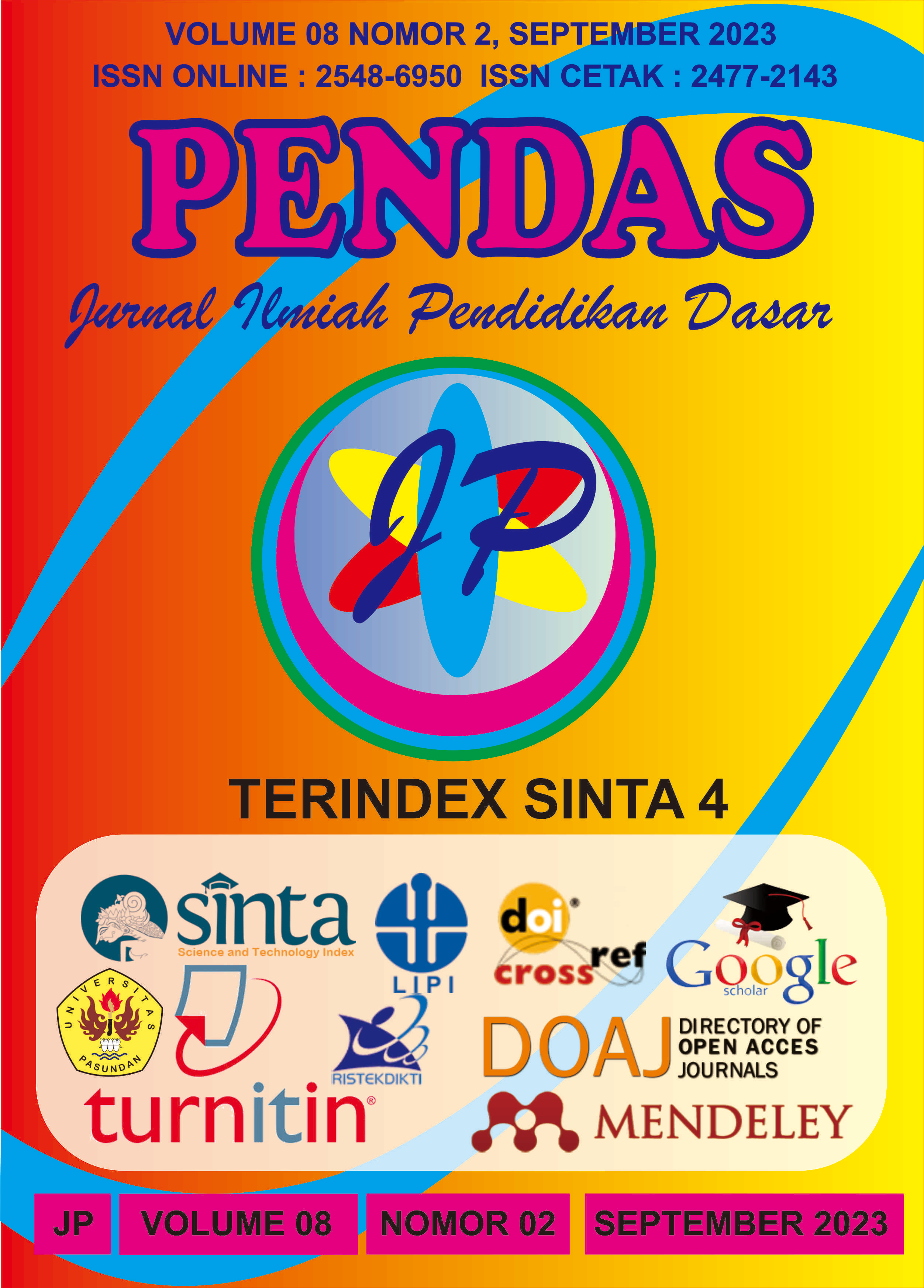ANALISIS KEBUTUHAN PENGEMBANGAN MEDIA PEMBELAJARAN FLIPBOOK PADA PEMBELAJARAN SENI MUSIK
DOI:
https://doi.org/10.23969/jp.v8i2.10000Keywords:
Analysis, Learning Media, FlipbookAbstract
The development of digital learning media in learning music arts in elementary schools needs to be improved, this is supported by changes in the education system that implements an independent curriculum system so as to create a freer and more enjoyable learning atmosphere. However, there are still many facilities and access to knowledge that have not been utilized optimally, so they only use less creative and innovative media. This research was conducted with the aim of providing an overview of the need to develop flipbook learning media in learning the art of music in elementary schools. Lots of websites that can be accessed in creating and developing interesting learning media, one of which is a flipbook. This study uses a quantitative approach with descriptive analysis techniques. The collection of data used in this study is an analysis using a questionnaire instrument. The results obtained from the analysis of flipbook learning media include: aspects of learning objectives obtain a percentage of 80% with good criteria, aspects of learning materials obtain a percentage of 81% with very good criteria, aspects of learning needs obtain a percentage of 78% with good criteria, aspects of use the media gets a percentage of 85% with very good criteria, and the ease of access aspect gets a percentage of 76% with good criteria. Thus the flipbook learning media that will be developed is useful and interesting for elementary school students to learn.Downloads
References
Amanullah, M. A. (2020). Pengembangan media pembelajaran flipbook digital guna menunjang proses pembelajaran di era revolusi industri 4.0. Jurnal Dimensi Pendidikan Dan Pembelajaran, 8(1), 37-44.
Fuad, A. J., & Permatasari, A. D. (2019). Penggunaan media slide powerpoint dalam meningkatkan prestasi belajar siswa sekolah dasar pada pembelajaran tematik. EL Bidayah: Journal of Islamic Elementary Education, 1(1), 61-78.
Holzberger, D., Philipp, A., & Kunter, M. (2013). How teachers’ self-efficacy is related to instructional quality: A longitudinal analysis. Journal of educational psychology, 105(3), 774.
Nurmadiah, Nurmadiah. (2018). “Kurikulum Pendidikan Agama Islam.” Al-Afkar : Jurnal Keislaman & Peradaban 2 (2). https://doi.org/10.28944/afkar.v2i2.93.
Priyanto, S. U. (2013). Pendidikan Musik Untuk Anak Usia Dini. Jurnal Pendidikan Sendratasik, 2(1), 42-52.
Reksoatmodjo, T.n. (2009). Statistika untuk Psikologi dan Pendidikan. Bandung: PT Refika Aditama.
Rizal, R. S. (2022). Peningkatan Hasil Belajar melalui Bahan Ajar Flipbook Siswa Sekolah Dasar. Arus Jurnal Pendidikan, 2(3), 252-256.
Roemintoyo, R., & Budiarto, M. K. (2021). Flipbook as innovation of digital learning media: Preparing education for facing and facilitating 21st Century learning. Journal of Education Technology, 5(1), 8-13.
Sari, W. N., & Ahmad, M. (2021). Pengembangan Media Pembelajaran Flipbook Digital di Sekolah Dasar. Edukatif: Jurnal Ilmu Pendidikan, 3(5), 2819-2826.
Sherly, Dharma, E., & Sihombing, H. B. (2020). Merdeka belajar: kajian literatur. UrbanGreen Conference Proceeding Library, 1.
Sugiyono. (2013). Metode Penelitian Kuantitatif, Kualitatif, dan Tindakan.
Suprayitno, S., Wiryanto, W., Fauziddin, M., & Julianto, J. (2023). Inovasi Guru dalam Pembelajaran Seni Musik untuk Siswa Kelas Rendah Sekolah Dasar. Jurnal Obsesi: Jurnal Pendidikan Anak Usia Dini, 7(3), 3117-3126.
Swanwick, K. (1988) Music, Mind and Education, London: Routledge.
Downloads
Published
Issue
Section
License
Copyright (c) 2023 Pendas : Jurnal Ilmiah Pendidikan Dasar

This work is licensed under a Creative Commons Attribution 4.0 International License.



















